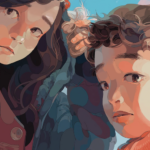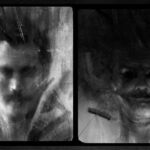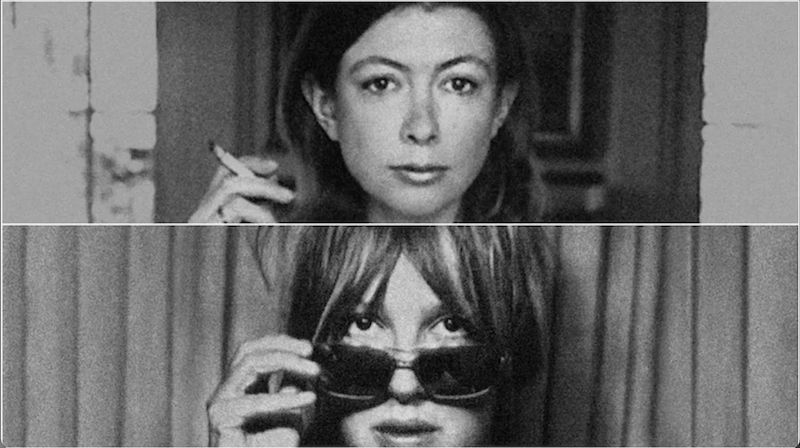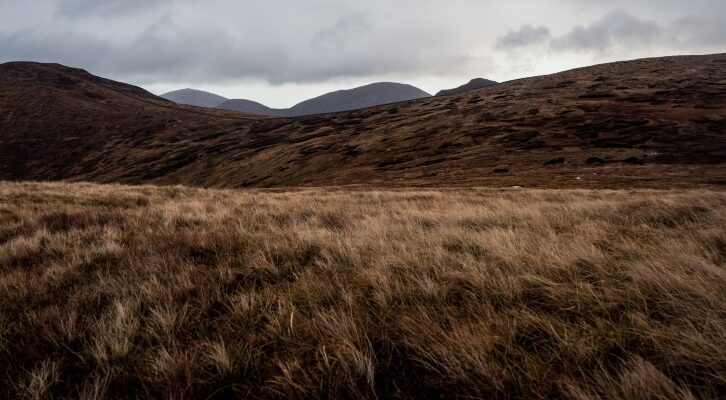What We Can Learn (and Should Unlearn) From Albert Camus’s The Plague
Liesl Schillinger on Catastrophe, Contagion, and the Human Condition
Usually a question like this is theoretical: What would it be like to find your town, your state, your country, shut off from the rest of the world, its citizens confined to their homes, as a contagion spreads, infecting thousands, and subjecting thousands more to quarantine? How would you cope if an epidemic disrupted daily life, closing schools, packing hospitals, and putting social gatherings, sporting events and concerts, conferences, festivals and travel plans on indefinite hold?
In 1947, when he was 34, Albert Camus, the Algerian-born French writer (he would win the Nobel Prize for Literature ten years later, and die in a car crash three years after that) provided an astonishingly detailed and penetrating answer to these questions in his novel The Plague. The book chronicles the abrupt arrival and slow departure of a fictional outbreak of bubonic plague to the Algerian coastal town of Oran in the month of April, sometime in the 1940s. Once it has settled in, the epidemic lingers, roiling the lives and minds of the town’s inhabitants until the following February, when it leaves as quickly and unaccountably as it came, “slinking back to the obscure lair from which it had stealthily emerged.”
Camus shows how easy it is to mistake an epidemic for an annoyance.Whether or not you’ve read The Plague, the book demands reading, or rereading, at this tense national and international moment, as a new disease, COVID-19, caused by a novel form of coronavirus, sweeps the globe. Since the novel coronavirus emerged late last year in the Chinese city of Wuhan (the city has been in lockdown since January), it has has gone on the march, invading more than a hundred countries, panicking populations and financial markets and putting cities, regions, and one entire country, Italy, under quarantine. This week, workplaces, schools and colleges have closed or gone online in many American towns; events have been canceled; and non-essential travel has been prohibited. The epidemic has been upgraded to pandemic. You may find yourself with more time to read than usual. Camus’s novel has fresh relevance and urgency—and lessons to give.
Be assured, before you take up this book, that however fearful COVID-19 may be, it is nowhere near as destructive as Camus’s plague. In the 14th century, the bubonic plague, also known as the “Black Death” killed almost a third of the people on the continent of Europe. When it rampaged through London in 1665 and 1666, it killed nearly a quarter of the population. In case you didn’t know, the bubonic plague still exists today, not only in pockets of Asia and Africa, but in the American Southwest. It’s transmitted by fleas from infected rodents, and causes high fever, vomiting and painful swellings called “buboes” (hence the name “bubonic). Even when treated with antibiotics it has a death rate of 10 percent; and if untreated, up to 90 percent. Coronavirus is not remotely like that.
When Camus wrote this novel, there was no epidemic of plague in Oran. Still, it had decimated the city in the 16th century and the 17th. (There was a monthlong outbreak in Oran in 2003.) But while The Plague quite literally and clinically relays the symptoms and consequences of that disease, the bacillus under the author’s lens is not so much physiological as sociological, and philosophical. Although his novel tracks the progression of a specific epidemic in a specific city, country and time frame, Camus’s true subject lies outside of time and place.
His intent is metaphorical: he addresses any contagion that might overtake any society; from a disease like cholera, the Spanish Influenza, AIDS, SARS, or, yes, COVID-19; to a corrosive ideology, like Fascism, or Totalitarianism, which can infect a whole population. Camus had seen the Nazis overrun Paris in 1940 during World War II. While he was writing The Plague, he was the editor in chief of Combat, the underground magazine of the French Resistance, whose contributors included André Malraux, Jean-Paul Sartre and Raymond Aron. He saw a connection between physical and psychological infection, which his book sutures together.
As the story begins, rats are lurching out of Oran’s shadows, first one-by-one, then in “batches,” grotesquely expiring on landings or in the street. The first to encounter this phenomenon is a local doctor named Rieux, who summons his concierge, Michel, to deal with the nuisance, and is startled when Michel is “outraged,” rather than disgusted. Michel is convinced that young “scallywags” must have planted the vermin in his hallway as a prank. Like Michel, most of Oran’s citizens misinterpret the early “bewildering portents,” missing their broader significance. For a time, the only action they take is denouncing the local sanitation department and complaining about the authorities. “In this respect our townsfolk were like everybody else, wrapped up in themselves,” the narrator reflects. “They were humanists: they disbelieved in pestilences.” Camus shows how easy it is to mistake an epidemic for an annoyance.
But then Michel falls sick and dies. As Rieux treats him, he recognizes the telltale signs of plague, but at first persuades himself that, “The public mustn’t be alarmed, that wouldn’t do at all.” Oran’s bureaucrats agree. The Prefect (like a mayor or governor, in colonial Algeria) “personally is convinced that it’s a false alarm.” A low-level bureaucrat, Richard, insists the disease must not be identified officially as plague, but should be referred to merely as “a special type of fever.” But as the pace and number of deaths increases, Rieux rejects the euphemism, and the town’s leaders are forced to take action.
Authorities are liable to minimize the threat of an epidemic, Camus suggests, until the evidence becomes undeniable that underreaction is more dangerous than overreaction. Most people share that tendency, he writes, it’s a universal human frailty: “Everybody knows that pestilences have a way of recurring in the world; yet somehow we find it hard to believe in ones that crash down on our heads from a blue sky.”
Soon the city gates are closed and quarantines are imposed, cutting off the inhabitants of Oran from each other and from the outside world. “The first thing that plague brought to our town was exile,” the narrator notes. A journalist named Rambert, stuck in Oran after the gates close, begs Rieux for a certificate of health so he can get back to his wife in Paris, but Rieux cannot help him. “There are thousands of people placed as you are in this town,” he says. Like Rambert, the citizens soon sense the pointlessness of dwelling on their personal plights, because the plague erases the “uniqueness of each man’s life” even as it heightens each person’s awareness of his vulnerability and powerlessness to plan for the future.
This catastrophe is collective: “a feeling normally as individual as the ache of separation from those one loves suddenly became a feeling in which all shared alike,” Camus writes. This ache, along with fear, becomes “the greatest affliction of the long period of exile that lay ahead.” Anyone who lately has had to cancel a business trip, a class, a party, a dinner, a vacation, or a reunion with a loved one, can feel the justice of Camus’s emphasis on the emotional fallout of a time of plague: feelings of isolation, fear, and loss of agency. It is this, “the history of what the normal historian passes over,” that his novel records, and which the novel coronavirus is now inscribing on current civic life.
“A feeling normally as individual as the ache of separation from those one loves suddenly became a feeling in which all shared alike,” Camus writes.If you read The Plague long ago, perhaps for a college class, you likely were struck most by the physical torments that Camus’s narrator dispassionately but viscerally describes. Perhaps you paid more attention to the buboes and the lime pits than to the narrator’s depiction of the “hectic exaltation” of the ordinary people trapped in the epidemic’s bubble, who fought their sense of isolation by dressing up, strolling aimlessly along Oran’s boulevards; and splashing out at restaurants, poised to flee should a fellow diner fall ill, caught up in “the frantic desire for life that thrives in the heart of every great calamity”: the comfort of community. The townspeople of Oran did not have the recourse that today’s global citizens have, in whatever town: to seek community in virtual reality. As the present pandemic settles in and lingers in this digital age, it applies a vivid new filter to Camus’s acute vision of the emotional backdrop of contagion.
Today, the exile and isolation of Plague 2.0 are acquiring their own shadings, their own characteristics, recoloring Camus’s portrait. As we walk along our streets, go to the grocery, we reflexively adopt the precautionary habits social media recommends: washing our hands; substituting rueful, grinning shrugs for handshakes; and practicing “social distancing.” We can do our work remotely to avoid infecting others or being infected; we can shun parties, concerts and restaurants, and order in from Seamless. But for how long? Camus knew the answer: we can’t know.
Like the men and women who lived in a time of disruption almost a century ago, whom Camus reimagined to illustrate his ineradicable theme, all we can know is that this disruption will not last forever. It will go, “unaccountably,” when it pleases. And one day, others will emerge. When they do, his novel warned long ago, and shows us even more clearly now, we must take care to read the “bewildering portents” correctly. “There have been as many plagues as wars in history,” Camus writes. “Yet always plagues and wars take people equally by surprise.”




















